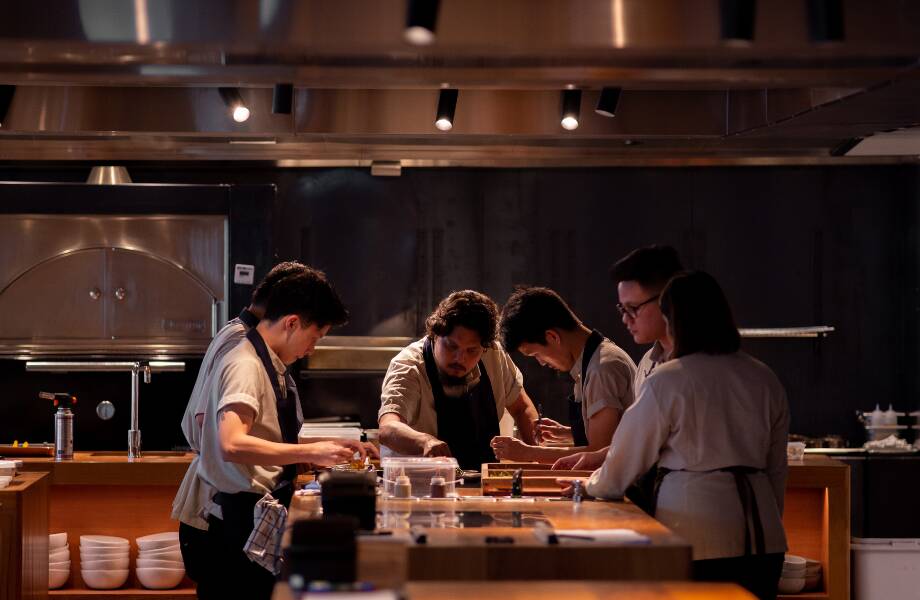Last spring I visited my friend in Hefei and she took me to a small, almost secret tea shop in the back of an agarwood museum. As we sat around the table, I couldn’t help but notice its beautiful layout. Magnificent porcelain cups sat on top of small bamboo coasters. A small tree and flowers sat between the guest and the brewer. The brewer, a friend of a friend, wore traditional clothes that were not only aesthetically beautiful, but also allowed her to perform graceful, dance-like movements as she poured everyone tea out of a gaiwan that was probably more expensive than the tea inside of it.
She carefully lit some incense and began a heated conversation with my friend about the importance of the plant placement on the table. As I sat there and listened to them debate about whether the tablecloth should go underneath or on top of the wooden tea table, I couldn’t help but let out a small sigh, and maybe an eye-roll. This beautiful and coordinated tea experience was a strong contrast to my experiences in the previous months in tea-producing country.

Flash back one week. I sat around a table with a different friend and his friend, all of whom were tea farmers. The table was a small wooden desk that looked like it’d had a hole cut out of the middle to fit the standard metal tea tray. There were no plants or decorations of any sort, and the closest thing they had to incense was the cigarettes that hung out of most of their mouths.
Flies buzzed around us mostly ignored as the men sat quietly, waiting for the few teas in front of us to finish brewing. After a few minutes the brewer poured out the tea into small bowls, and suddenly the table exploded to life. The men around the table, all tieguanyin farmers, began to pour tea, examine the leaves and smell the lids. I couldn’t understand the conversation completely, but it seemed to be focused on only one thing: the taste of the tea.
Related:
 As Supply Meets Global Demand, Tea Quality DropsArticle Sep 12, 2017
As Supply Meets Global Demand, Tea Quality DropsArticle Sep 12, 2017
The farmers are focused strictly on flavor. While they sometimes have nice gaiwans or a nice table, this is rare, and it’s and never the point of the conversation. Their focus is much more on the flavor of the tea itself. This of course is rooted in the fact that their entire livelihood is based on the flavor they produce. The production of a flavorful tea and/or the failure to produce a good flavor will greatly affect their income, as flavorful teas of course sell at a much higher price. Because of this, when they taste tea, it is the flavor they are most focused on.
Tea shops are a little different. They tend to think of the larger picture of the tea drinker’s experience. This is a lesson I learned while working in New York City’s fine dining world — experience is everything. When you sit down in a tea shop, you are not just using your sense of taste; you experience the tea shop with all of your senses. You see the layout of the tea table, you hear the sounds of the shop, and you experience the shop with your sense of smell. All of these are important to your tea drinking experience, and can even have an affect on how you perceive the tea.

Nevertheless, I’ve found that some tea shops have a lesson to learn from the farmers — the tea comes first. Many tea shops get so lost in things looking pretty, in romanticizing the idea of drinking tea, that they almost forget about the tea itself.
The most common example of this is the lighting of incense. Your sense of smell has a large affect on your sense of taste. Lighting incense while drinking tea can physically alter the way you experience the tea, and even change the flavor. If I tried to set a stick of incense in the middle of a tea farmer’s tasting table, more than likely they’d quickly take it off the table and complain that it blocks their ability to taste the tea. It seems that when tea changes hands from farmer to shop, it becomes less of the focus in itself and more of a part of a larger picture, for better of for worse.
So where do we draw the line? How do we enhance the overall experience without overpowering the tea itself? While this is a difficult question with no clear answer, I can’t help but think of the Japanese tea ceremony. The surroundings are carefully chosen. Paintings are hung to match the season, and even how the tea maker holds the bowl is ritualized. But despite all this focus on the surroundings, the tea itself is still given its due attention. The color is examined, and the tea is mindfully tasted. While Japanese teas and Chinese teas are vastly different, in this author’s opinion, the philosophy behind the Japanese tea ceremony is one that can be studied and used to better enjoy Chinese tea.
















